Chengde Mountain Resort
| UNESCO World Heritage site | |
|---|---|
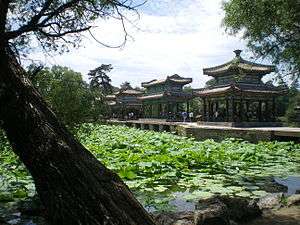 Mountain Resort, Chengde | |
| Location | Chengde, Hebei, China |
| Part of | Mountain Resort and its Outlying Temples, Chengde |
| Criteria | Cultural: (ii), (iv) |
| Reference | 703 |
| Inscription | 1994 (18th Session) |
| Coordinates | 40°59′15″N 117°56′15″E / 40.98750°N 117.93750°ECoordinates: 40°59′15″N 117°56′15″E / 40.98750°N 117.93750°E |
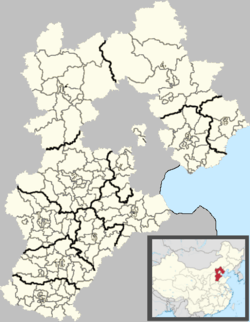 Location of Chengde Mountain Resort in Hebei 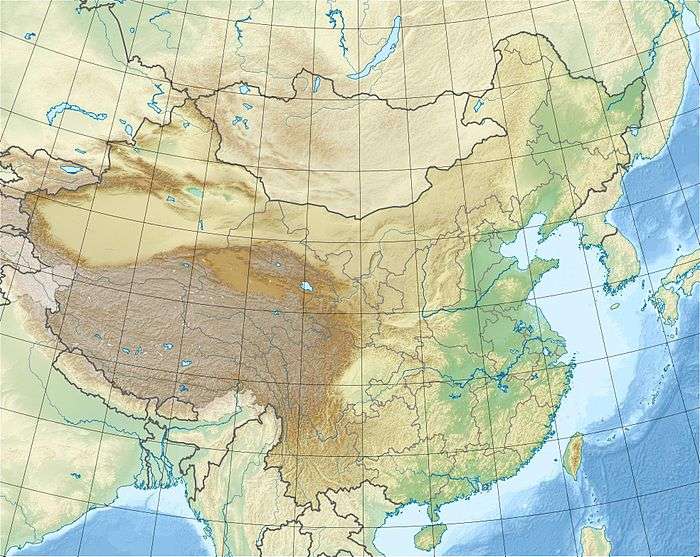 Chengde Mountain Resort (China) | |
The Mountain Resort in Chengde (simplified Chinese: 避暑山庄; traditional Chinese: 避暑山莊; pinyin: Bìshǔ Shānzhuāng; literally: "Mountain Villa for Avoiding the Heat"; Manchu: ![]()
It is one of China's four famous gardens, World Heritage Site, national relic protection unit and Class 5A Tourist Attractions in China.[2]
History
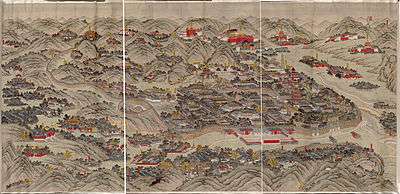
Built between 1703 and 1792 during the Qing dynasty, the Mountain Resort took 89 years to complete. It covers a total area of 5.6 square kilometres (2.2 sq mi), almost half of Chengde's urban area. It is a vast complex of palaces and administrative and ceremonial buildings. Temples of various architectural styles and imperial gardens blend harmoniously into a landscape of lakes, pastureland and forests.
The Kangxi, Qianlong and Jiaqing emperors often spent several months a year here to escape the summer heat in the capital city of Beijing and the palace zone in the southern part of the resort was therefore designed to resemble the Forbidden City in Beijing. It consists of two parts: a court in front, where the emperor received high officials, nobles of various minority nationalities, and foreign envoys; and bed chambers in the rear, which were the imperial family's living quarters, notably the Yanbozhishuang Hall, where Emperor Kangxi spent a total of 12 summers while Qianlong spent 52 summers in the hall during the course of their reign. The Jiaqing and Xianfeng emperors both died while staying at Chengde in 1820 and 1861 respectively.
Climate
Chengde Mountain Resort is located in the transition zone from warm temperate zone to cold temperate zone.It has semi - temperate, semi - arid continental monsoon climate.It has large difference in temperature between day and night.In winter,it is cold and has little snow.It has much thundershower in summer, basically there is no hot period.Chengde Mountain Resort is suitable for traveling in every season,but best from April to October.[3]
Scenic spots
The Mountain Resort is most famous for the 72 scenic spots which were named by the Kangxi and Qianlong emperors. Many of the scenic spots around the resort's lake area were copied from famous landscaped gardens in southern China. For instance, the main building on the Green Lotus Island, "Tower of Mist and Rain," (Chinese: 烟雨楼; pinyin: Yānyǔ Lóu) is modeled upon a tower in Nanhu Lake at Jiaxing in Zhejiang Province.
The resort's plain area also possesses characteristics of the scenery of the Mongolian grasslands. Forested mountains and valleys are dotted with various buildings. This includes a 70 metres (230 ft) tall stone Chinese pagoda, one of the tallest in China, built in 1751 during the reign of the Qianlong Emperor. The pagoda is shaped with an octagonal base, while the pagoda's nine stories are decorated with colorful glazed tiles and the steeple is crowned with a gilded round spire.
In December 1994 the Mountain Resort was listed by UNESCO on its list of World Heritage Sites.
Events
The 2018 Women's Bandy World Championship was held at a naturally frozen ice at the lake in the complex.
Gallery
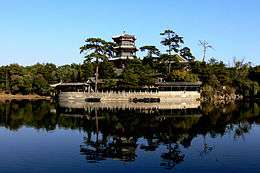 A tower on the Little Golden Mountain
A tower on the Little Golden Mountain A pond of lotuses
A pond of lotuses One of the many pavilions inside the complex
One of the many pavilions inside the complex The Mountain Resort is dotted with lakes and gardens that imitates landscapes from around China
The Mountain Resort is dotted with lakes and gardens that imitates landscapes from around China The 70 m tall pagoda
The 70 m tall pagoda- The Kangxi Emperor inscription dragon board
- An example of a grid door
- The Wenjin Chamber
- Bird's eye view of Xumi Fushou Temple from top of a hill in the Mountain Resort
- Lizheng Gate - entrance reserved for the Qing emperors
- Yanbozhishuang Hall - The Jiaqing Emperor and Xianfeng Emperor both died in this Hall on September 02, 1820 and August 22, 1861 respectively
 Ice on the lake where the 2018 Women's Bandy World Championship was played
Ice on the lake where the 2018 Women's Bandy World Championship was played
See also
References
- ↑ Journal of garden history, Volume 19. Taylor & Francis from University of California. 1999.
- ↑ "中华人民共和国文化和旅游部". www.mcprc.gov.cn. Retrieved 2018-07-05.
- ↑ "承德 - 气象数据 -中国天气网". www.weather.com.cn. Retrieved 2018-07-05. line feed character in
|title=at position 3 (help)
Further reading
- Hevia, James Louis. "World Heritage, National Culture, and the Restoration of Chengde." positions: east Asia cultures critique 9, no. 1 (2001): 219-43.
- In 1998 Foreign Languages Press published "Imperial Resort at Chengde" to guide English language visitors.
